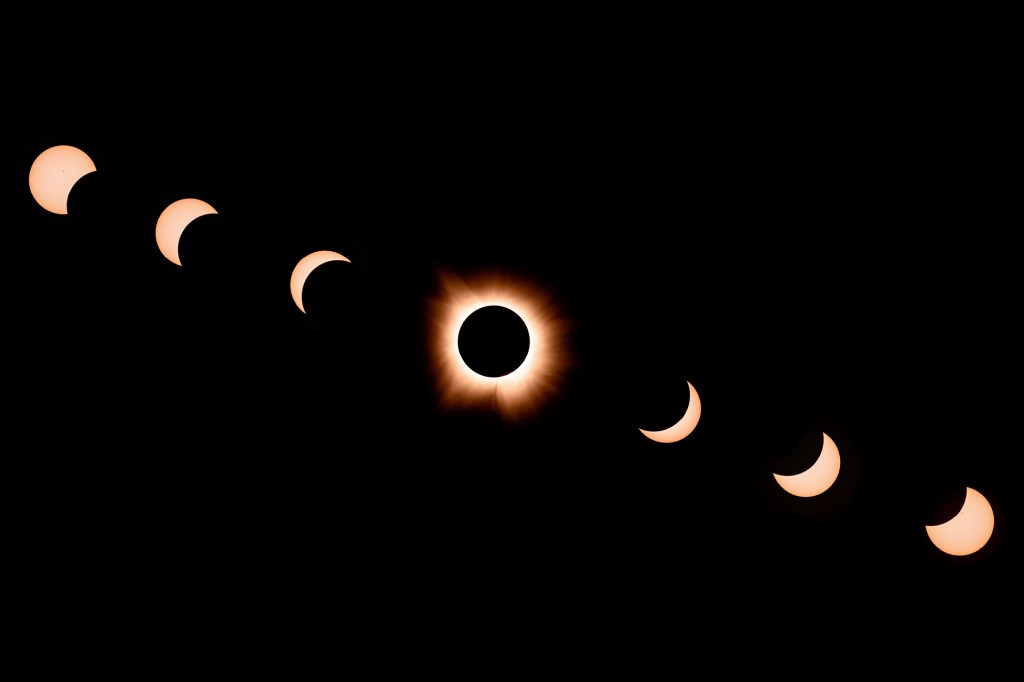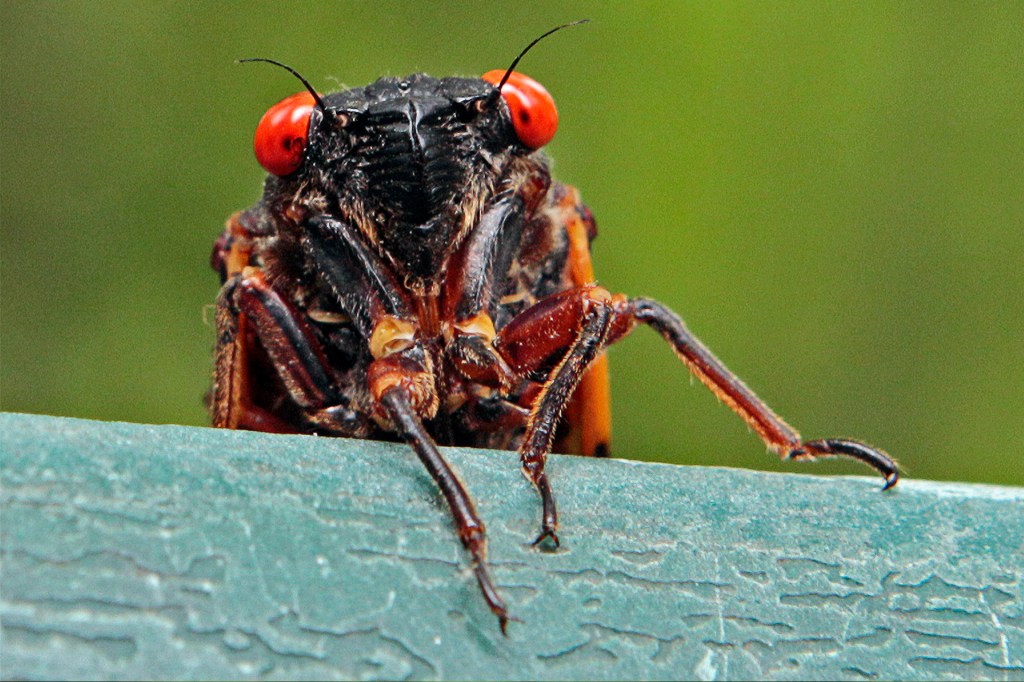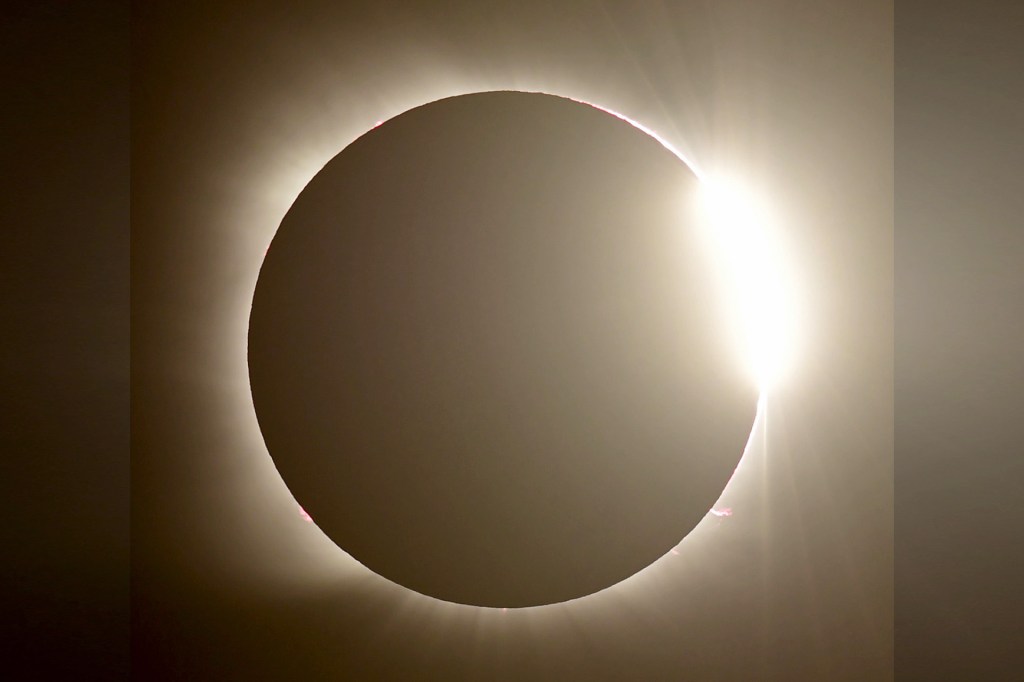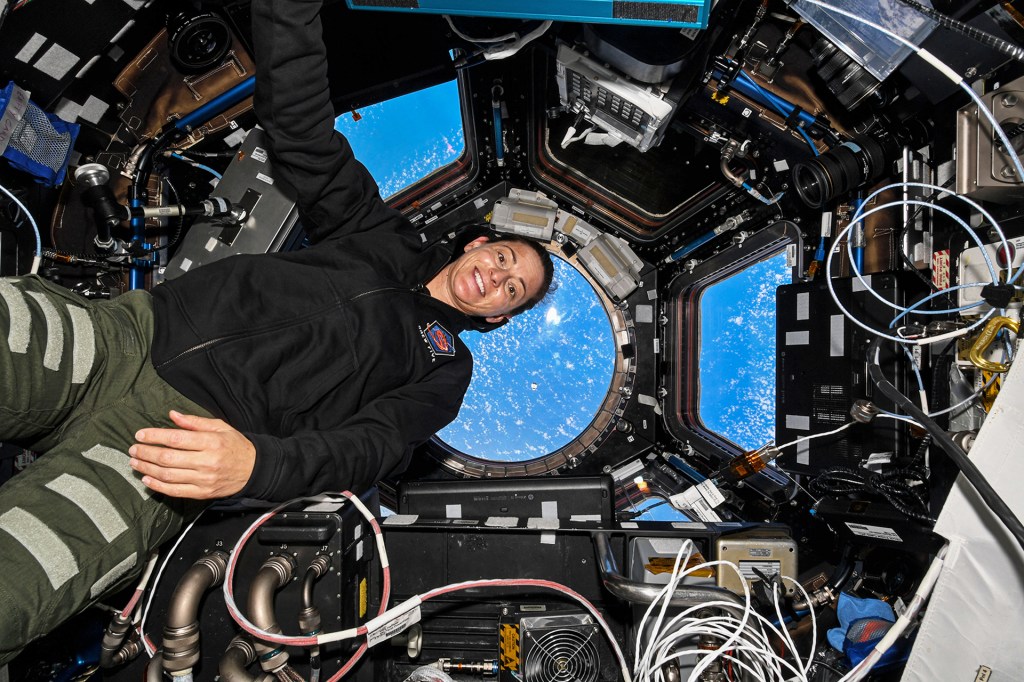
Nicole Mann, a member of the Round Valley Indian Tribes, treasures the dream catcher her mother gave her when she was a girl. This small hoop with a feather is said to offer protection. Mann believes it helped her when she flew 47 combat missions in Iraq and Afghanistan.
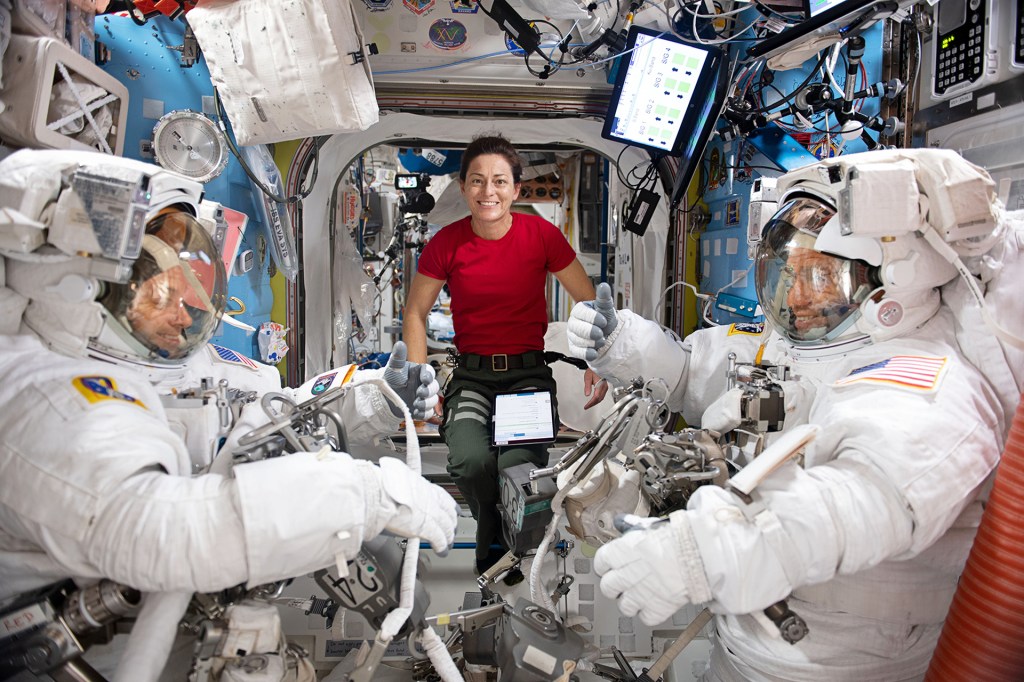
SUITED UP With Mann’s help, astronauts Josh Cassada (left) and Rubio prepare for a seven-hour spacewalk.
NASAMann is now a NASA astronaut. Last October, she blasted off aboard a SpaceX Crew Dragon craft for the International Space Station (ISS). She is the first Native American woman in space. Her dream catcher went with her.
Since Mann’s launch, the news media has been clamoring to talk to her. In an interview with the Associated Press (AP), she spoke of the power she draws from her tribal community on Earth.
A New View
Mann talked to the AP by way of a video link. “[I] know that I have the support of my family and community back home, and that when things are difficult or . . . I’m getting burned-out or frustrated, that strength is something that I will draw on,” she said.
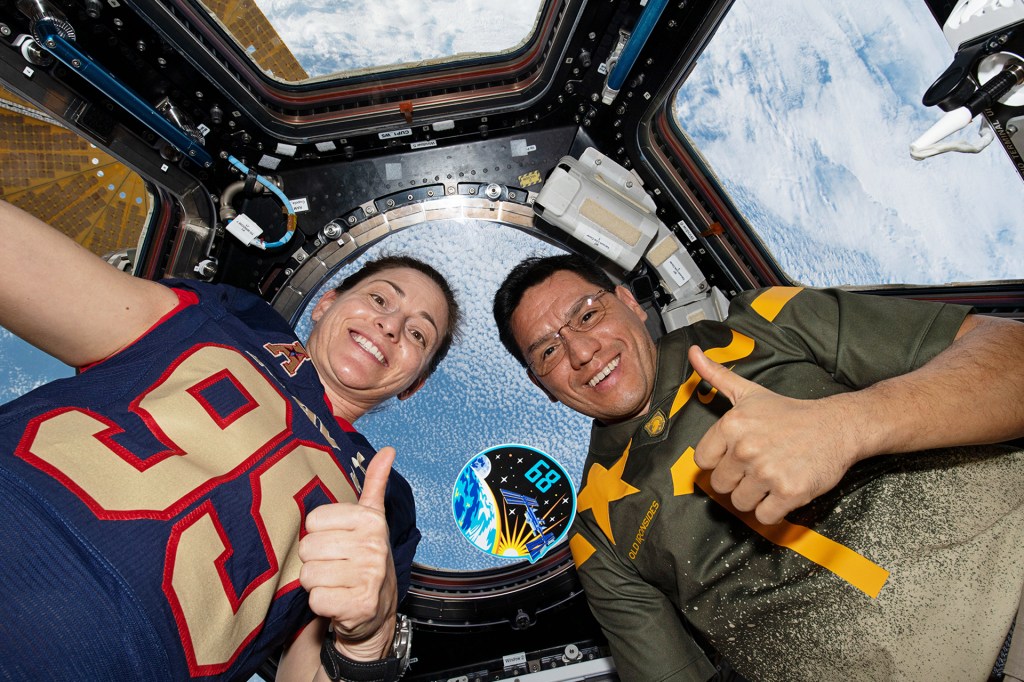
ALL SMILES Mann and astronaut Frank Rubio pose with their mission insignia on board the ISS. They’re 262 miles above the Pacific Ocean.
NASAWhat about the so-called overview effect? That’s the sense of awe astronauts describe upon looking down on the Earth from space. Mann says she felt it right away
“It is an incredible scene of color, of clouds and land,” she said. “It’s difficult not to stay in the cupola
cupola
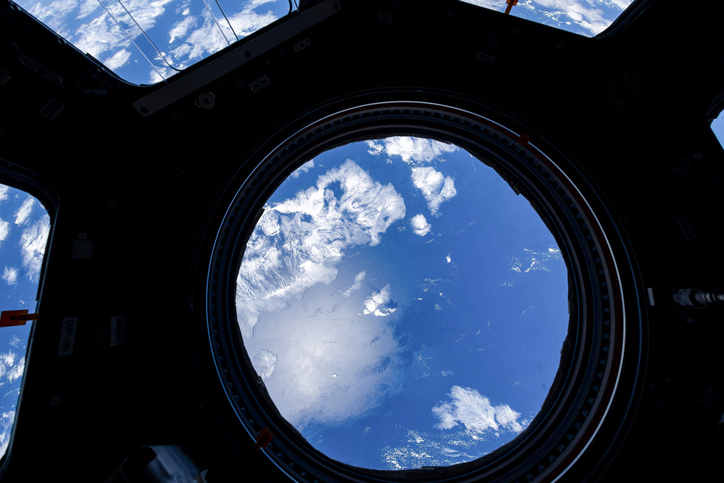 ROBERTO MACHADO NOA—GETTY IMAGES
a small structure used for observation
(noun)
The view from the cupola was amazing.
all day and just see our Planet Earth and how beautiful she is, and how delicate and fragile
fragile
ROBERTO MACHADO NOA—GETTY IMAGES
a small structure used for observation
(noun)
The view from the cupola was amazing.
all day and just see our Planet Earth and how beautiful she is, and how delicate and fragile
fragile
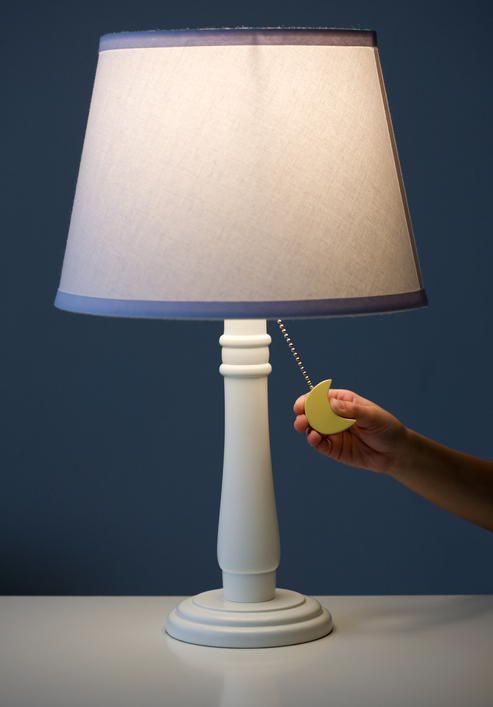 JAMIE GRILL—GETTY IMAGES
delicate; easy to break or ruin
(adjective)
The lamp is fragile and must be handled with care.
she is.”
JAMIE GRILL—GETTY IMAGES
delicate; easy to break or ruin
(adjective)
The lamp is fragile and must be handled with care.
she is.”
That overview perspective is especially important as a war continues to rage on the surface of our planet. It has now been nearly one year since Russian troops began their invasion of Ukraine. The crew aboard the ISS includes three Russian cosmonauts, three American astronauts, and one astronaut from Japan. Mann appreciates the power of this international collaboration.
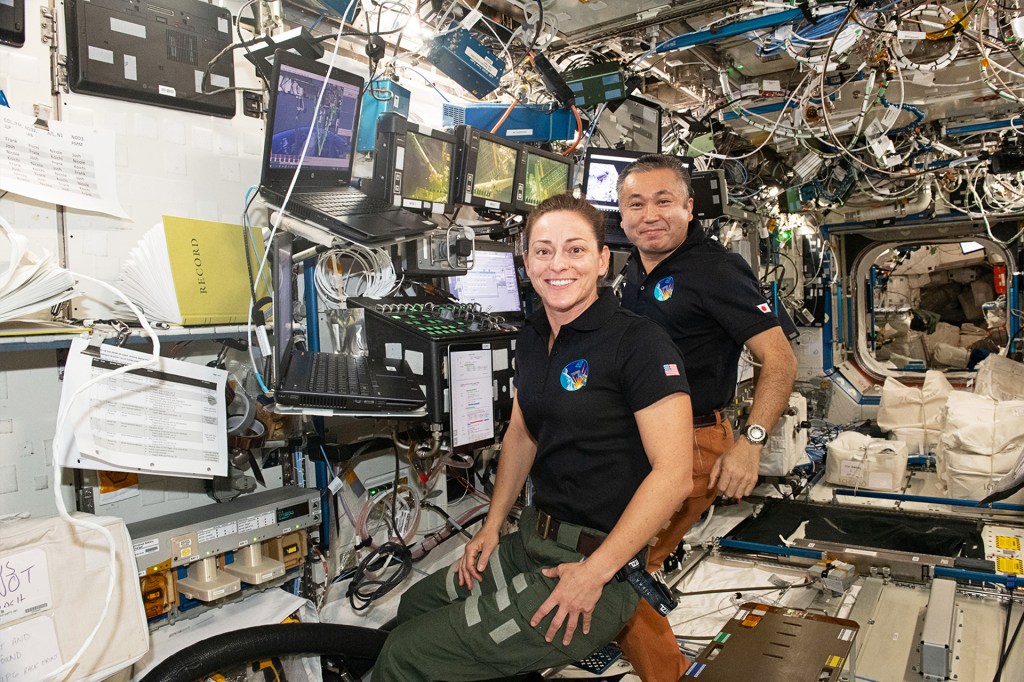
TEAMWORK Flight engineers Mann and Koichi Wakata, of the Japan Aerospace Exploration Agency, work together on the ISS.
NASA“What that does,” she says, “is it just highlights our diversity and how incredible it is when we come together as a human species, the wonderful things that we can . . . accomplish.”
As a girl, Mann was fascinated by space. But she didn’t understand what it took to be an astronaut. And she didn’t know that it was an opportunity available to her. Now Mann encourages young people to dream big and aim for the stars. Her five-month mission aboard the ISS wraps up in March.




